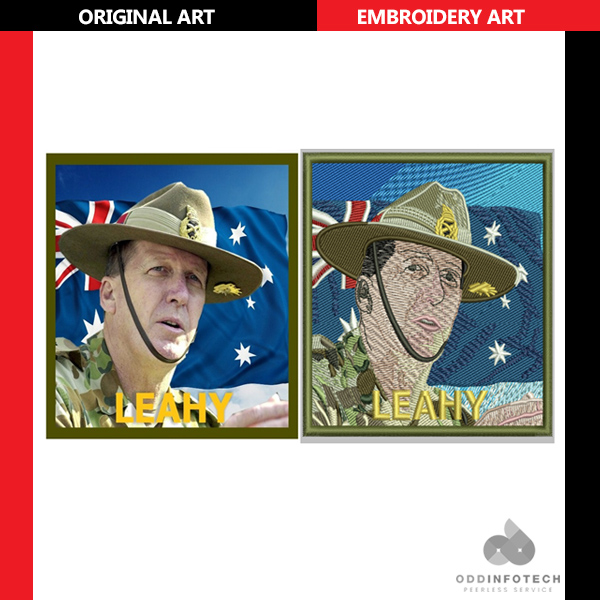Project Description
Embroidery digitizing has become a crucial aspect of branding and personalization in the fashion industry, especially when it comes to caps and hats. This process involves converting artwork into a digital format that embroidery machines can interpret, allowing for precise stitching and intricate designs. In this article, we’ll delve into the world of cap and hat embroidery digitizing, exploring its importance, the process involved, tips for success, and common pitfalls to avoid.
The Importance of Cap and Hat Embroidery Digitizing
Enhancing Brand Identity
Customized caps and hats with embroidered logos or designs serve as powerful branding tools. They help businesses and organizations stand out in a crowded marketplace, leaving a lasting impression on customers and prospects alike. Embroidery digitizing ensures that logos and designs are reproduced with precision and clarity, maintaining brand consistency across various promotional items.
Customization and Personalization
In today’s consumer-driven market, personalization is key to customer satisfaction. Cap and hat embroidery digitizing allow individuals to express their unique style preferences by creating custom designs or adding personal touches to existing ones. Whether it’s initials, slogans, or intricate patterns, embroidery digitizing offers endless possibilities for personalization.
Understanding the Embroidery Digitizing Process
Embroidery digitizing involves several steps, each crucial to achieving high-quality results.
Digitizing Software
Digitizing software is used to convert artwork or designs into a format that embroidery machines can understand. This process involves assigning stitch types, colors, and densities to different elements of the design, ensuring smooth and accurate stitching.
Design Selection and Preparation
Choosing the right design is essential for successful embroidery digitizing. Complex designs may need to be simplified to maintain clarity and stitchability. Additionally, designs must be properly prepared, ensuring that they are clean, scalable, and compatible with the digitizing software.
Stitch Types and Density
The choice of stitch types and density can significantly impact the final embroidery quality. Different materials and designs may require varying stitch types, such as satin stitches for text and fill stitches for larger areas. Proper stitch density ensures that the design looks crisp and defined without being overly dense or sparse.
Choosing the Right Embroidery Digitizing Service
When outsourcing embroidery digitizing, it’s essential to choose a reputable and experienced service provider.
Reputation and Experience
Look for a digitizing service with a proven track record of delivering high-quality results. Check online reviews and portfolios to gauge the quality of their work and their level of expertise in cap and hat embroidery digitizing.
Turnaround Time
Consider the turnaround time offered by the digitizing service, especially if you have tight deadlines. A reliable service provider should be able to deliver digitized designs within a reasonable timeframe without compromising on quality.
Pricing
While cost is undoubtedly a factor, it’s essential to prioritize quality when choosing an embroidery digitizing service. Compare prices from different providers, but don’t compromise on the quality of workmanship and customer service.
Tips for Successful Cap and Hat Embroidery Digitizing
Simplify Complex Designs
Complex designs may look impressive on paper, but they can be challenging to digitize and embroider effectively. Simplify intricate details and opt for clean, bold lines that translate well into embroidery.
Consider Fabric and Stitch Compatibility
Different fabrics require different embroidery techniques and stitch types. Consider the material of the cap or hat and choose stitches that complement its texture and density for optimal results.
Test Embroidery on Similar Material
Before proceeding with a full production run, test the digitized design on a sample piece of fabric similar to the final product. This allows you to identify any potential issues and make adjustments before committing to larger quantities.
Common Mistakes to Avoid in Cap and Hat Embroidery Digitizing
Ignoring Design Size and Placement
Pay attention to the size and placement of the embroidery design on the cap or hat. Designs that are too large or positioned incorrectly can appear disproportionate or awkward when worn.
Neglecting Thread and Fabric Selection
Choosing the right thread color and type is crucial for achieving the desired aesthetic and durability. Similarly, selecting the appropriate fabric ensures that the embroidery holds up well over time and maintains its integrity.
Rushing the Digitizing Process
Embroidery digitizing requires time and attention to detail. Rushing the process can lead to errors, such as missed stitches or uneven density, compromising the quality of the final embroidery.
Conclusion
Cap and hat embroidery digitizing offer endless opportunities for businesses and individuals to elevate their brand identity and express their unique style. By understanding the digitizing process, choosing the right service provider, and following best practices, you can ensure that your embroidered designs stand out for all the right reasons.
FAQs About Cap and Hat Embroidery Digitizing
-
How long does it take to digitize a design for a cap or hat?
- The time required for digitizing depends on factors such as design complexity and the digitizing service’s workload. Typically, it can range from a few hours to a couple of days.
-
Can any design be embroidered on a cap or hat?
- While most designs can be embroidered, it’s essential to consider factors such as size, stitchability, and fabric compatibility. Complex designs may need to be simplified for optimal results.
-
What file formats are compatible with embroidery digitizing software?
- Most digitizing software supports common file formats such as JPEG, PNG, and AI. However, vector formats like SVG or EPS are preferred for their scalability and clarity.
-
Is embroidery digitizing suitable for small-scale customization projects?
- Yes, embroidery digitizing is suitable for both large-scale production runs and small-scale customization projects. Many digitizing services offer flexible pricing and turnaround options to accommodate different needs.
-
How can I ensure that the embroidered design lasts long on caps and hats?
- To ensure durability, choose high-quality threads and fabrics, and follow care instructions provided by the manufacturer. Avoid harsh detergents and excessive heat when washing embroidered caps and hats.


